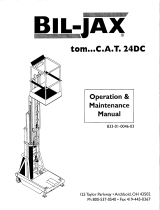
Page 6
Magnetic Loops
The design and Construction of the metal detector
support framework can be very influential on the
overall performance of the detector. A metal
detector with excellent vibration characteristics, if
mounted on a structure containing magnetic loops
can be made to look extremely poor and very
sensitive to vibration.
Metalwork, even though positioned outside the
normal metal free zone can still act as an aerial or
receiver for the magnetic field from the detector
making the whole framework susceptible to loop
effects.
The leakage magnetic field from the aperture of the
detector can generate minute electrical currents
that flow in the surrounding metalwork. They in turn
influence the detector. An electric current will flow if
a closed electrical path or loop exists.
A typical installation could be a standard series
detector mounted on a metallic conveyor frame with
rollers positioned across the frame, page 60.
The magnetic field from the detector can radiate
into the conveyor frame, and this in turn would
create minute electrical currents which can flow
through the closed path or loop created by the
rollers across the conveyor frame.
Problems with loops can be avoided by opening or
closing the loop in a permanent manner. It is the
intermittent nature of a loop path that causes
intermittent triggering of the detector.
The problem with the rollers on the conveyor can
be overcome by insulating one end of the roller
from the conveyor frame. This may take the form of
plastic insulation plate and washers on the bearing
mounting block or supply a plastic extension to end
of the roller shaft (see fig. 7). By insulating the
roller in this way the loop is opened permanently.
The conveyor frame itself should be of welded
construction rather than bolted sections. A welded
construction is an example of a permanently closed
loop.
Any items bolted to the conveyor frame, particularly
items positioned across the conveyor (e.g. guards)
potentially create loops. To avoid difficulties
insulate/isolate all items bolted to the frame.
Installing the Detector Head
Every effort is made to minimise the effect of
mechanical vibration on the detector head.
However, better sensitivity may be achieved if
vibration from other machines is isolated from the
detector.
Avoid supporting the detector head on vibrating
structures and/or machines subject to mechanical
shock.
Also, remember to position the detector in such a
way to allow removal of the control unit for
servicing.
Provided with the detector are four plastic insulation
sets for mounting the detector feet on to the support
structure. It is important these items are used to
mount the detector to its support framework.
When installed correctly the detector head should
be electrically insulated/isolated from the support
structure and connected to earth/ground only
through its own electrical connections.
If other ground paths to the detector exist they will
create a ground loop which will cause intermittent
triggering of the detector.
Installing the Power Unit
WARNIN
Ensure all power has been disconnected from the
detector before attempting to work on any electrical
components of the detector.
WARNIN
If the detector is supplied as part of a system, read all
the system literature before commencing electrical
installation
The power unit may be situated at a convenient
position remote from the detector head. Detection
heads are normally shipped from the factory with a
cable length of three metres.
When installing the power unit cables avoid running
the cable adjacent to other cables carrying switched
or heavy loads. This will reduce the possibility of
problems with electrical interference.
Electrical connections to the power unit are as
shown in Fig. 6A. Details of power supply




















